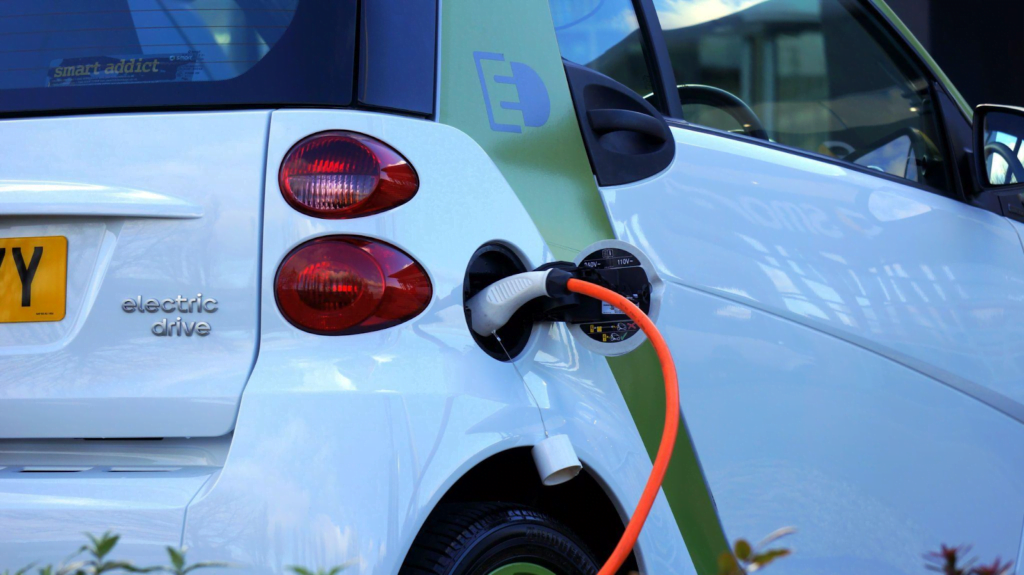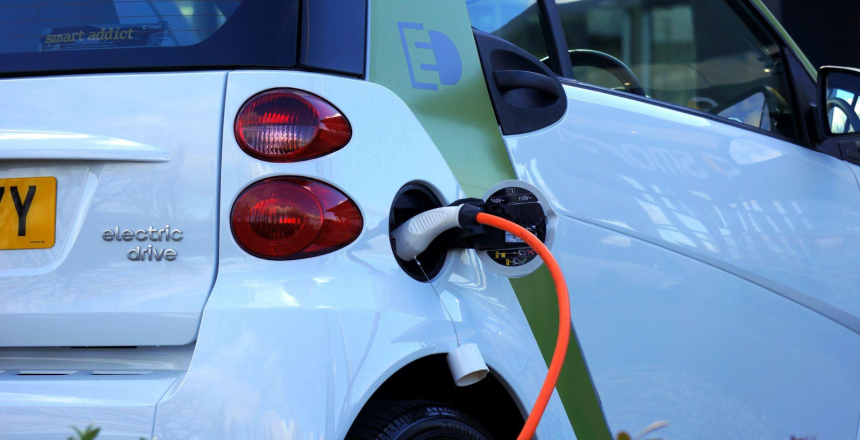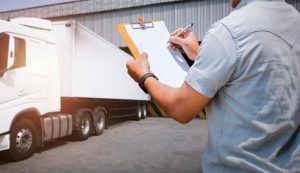The fast pace and innovation in technology have led to significant developments in different fields and industries, especially the vehicle transport sector. This upgrading does not exclude the transportation industry. The COVID-19 pandemic was a serious catastrophe suffered by the automobile industry between 2019 and 2021.
A sector meant to be mobile and connective became redundant due to the pandemic. However, just like man, technology is also adapting to changes. Hence, some notable trends will change the movement of people and the transportation of goods.
As a result, these trends will impact the automotive sector’s future and other sectors. In essence, any business with a supply chain that relies on the flow of goods should be aware of these trends. The focus of this article is to educate your mind about these current vehicle transport trends in 2022.
Major Transport Trends for Vehicle in 2022.
Electrification Trend Is the Future of Transport
We cannot overemphasize that transportation has significantly contributed to greenhouse gas emissions. Transport accounts for over 29% of total greenhouse gas emissions in the United States. These emissions primarily result from the combustion of fossil fuels (especially diesel and gasoline) to power automobiles, trucks, planes, ships, and trains.
The ripple effect that this might cause calls for an urgent shift to more environmentally friendly automobiles, where electrification comes in. Electric vehicles (EVs) look to be reaching a tipping point in the automotive industry.
EVs accounted for about 6% of worldwide car sales in 2020, but that figure is expected to rise to 13% by 2026 and 22% by 2030. Stricter national emissions limits, improvements in charging infrastructure, more urban population, and the falling price of the lithium-ion batteries that power EVs will all work together to drive widespread adoption of EVs.
And it isn’t just automobiles that are getting electric:
- Ola, an Indian ride-sharing startup, has made significant investments in e-scooters. The company owns a plant in India that is set to generate about 10 million electric scooters per year. Hence, it will become the world’s largest e-scooter plant.
- Another company named Daimler is investing in e-truck technology. They already have a 250-mile-range eCascadia and 230-mile-range eM2 trucks that will go into production in 2022.
- Norway has been operating electric vehicle ferries since 2015. However, by 2023, the country intends to operate an all-electric fleet.
Without electrifying the propulsion train, the move to zero-emissions personal transportation would be impossible. Automobiles currently generate highly minimal quantities of hazardous compounds, noise, and dust. Going “emissions-free” appears to be a global initiative as well. The idea is that the electricity needed to charge the vehicles will come from renewable sources, ensuring CO2 neutrality. This is the level at which the automotive industry will operate in 2022.
Trend of Autonomous in Vehicle is Improving the Transportation
Autonomous vehicles can transform the way people and products are carried. They can also reduce congestion on highways, and also improve road safety. There is also an idea that might even revolutionize the way cities are designed. This will send the concept of large parking lots into oblivion, as autonomous vehicles will drop people and goods off at the exact destination and then return to pick them up later.
That’s an incredible vision of the future, but there must be a good overview of where the world is with self-driving cars. Here is a summary:
According to Elon Musk, Tesla’s autonomous vehicle technology will be capable of Level 5 autonomy by the end of 2021. Level 5 autonomy is where the vehicle will do all driving functions in any situation. However, Tesla representatives later stated that Musk was exaggerating slightly. Obviously, they have been unable to attain that milestone.
Automakers Aim
Many other automakers aim for Level 4 autonomy. Level 4 autonomy is where the vehicle can only drive itself under specified situations.
On the other hand, driverless taxis are already a reality in several parts of the world. Waymo is now offering fully driverless rides to the public in Phoenix. In China, AutoX plans to debut fully driverless taxis in early 2021.
Meanwhile, numerous companies are striving to develop self-driving trucks in the freight industry, like TuSimple, which is collaborating with UPS to undertake tests in Arizona and Texas. TuSimple vehicles are still equipped with a driver ready to take the wheel. Still, the business intends to launch its first driverless testing in 2021 and begin selling autonomous trucks in 2024.
The tremendous progress made in artificial intelligence, deep neural networks, and machine learning enables the construction of self-driving vehicles that do not require human involvement even in complex traffic conditions. Individual mobility platforms will be redesigned as a result of these self-driving vehicles.
Explore the emerging trends in auto transport by reading our article “The Most Popular Car Trends From Coast to Coast”
Servitization is a Huge Trend in Transport Industry
Servitization is a huge trend that will touch practically every industry, including the automobile industry. Owning and driving automobiles will soon be cut short. This is because more people live in densely populated megacities.
Also, as concerns about the climate catastrophe increase, people are looking forward to green cars. Furthermore, with the rise of ride-sharing services such as Didi Chuxing and Uber, transportation has become far more complex than it was previously.
Hence, people are increasingly resorting to mobility-as-a-service (MaaS) providers to meet their transportation demands. MaaS is the idea of having mobility on demand. Some firms fit into this narrative already, like Uber. However, future MaaS operators will provide mobility options through a single payment channel and interface. The crucial concept here is mobility access rather than ownership. The majority of city dwellers may never need to possess a car in the future.

Revolutions Involved in These Transport Trends of Vehicle
Easy Transport Management Due to Connected Vehicle Technology
Thanks to connected vehicle technology, cars, trains, trucks, and trains can relay information via devices that transmit mobility, safety, and weather data. Vehicle-to-vehicle, network, infrastructure, grid, pedestrian, device, and cloud technology are the most common. LTE and 5G allow vehicles to communicate with data centers, pedestrians, and nearby cars to have access to reliable communication systems and send traffic situations, weather, and accident conditions to drivers.
Vehicle-to-infrastructure communication refers to data interchange between road infrastructures and vehicles, such as road signs, parking meters, lane markers, cameras, traffic lanes, and lamps.
There is such a thing as vehicle-to-cloud communication. It involves the usage of software updates, remote diagnostics, and communication with household appliances and digital assistants.
So, connectivity provides several advantages, including remote access to advanced navigation systems, various software features, and access to a wide range of information and entertainment services.
Artificial Intelligence Is Making Transport Safer
Artificial intelligence (AI) has a range of applications in the automotive sector, including supply chain, production and post-production, and vehicle design, by utilizing data and algorithms to train systems to learn independently.
AI comes in handy in manufacturing for supply chain optimization, the automation of human repetitive operations, and vehicle assembly. Manufacturers also use AI-enabled solutions for inventory replenishment, volume and demand forecasting, and automated supply chain management choices. AI systems also aid in quality control by detecting faults, detecting cracks, and providing predictive monitoring.
AI-enabled technologies.
AI also identifies risks, monitors drivers, and predicts maintenance. AI-enabled technologies aid in predicting future problems with the engine and battery performance, the security, and reliability of vehicles. Artificial intelligence technologies for driver monitoring are utilized for real-time risk evaluation to avert potentially risky and emergency scenarios.
The program can identify possible problems due to tiredness, absent-mindedness, and sleepiness. It can also assess the present mood and behavior by studying the driver’s history and actions. This will eventually help the AI avoid an accident. It will consider the driver’s driving behavior and the driver’s vitals before taking over in the event of shallow breathing or racing heartbeat.
Also, there are existing applications for in-vehicle cybersecurity that aid in detecting possible threats and anomalies.
Self-driving Vehicles Will Reduce Transportation Time and Costs
Full automation will save hundreds of thousands of lives in the coming years. According to a US Department of Transportation report, human mistake causes 94% of all fatal accidents, and autonomous vehicles can reduce the rate of roadway fatalities. Aside from increased road safety, self-driving vehicles will reduce transportation travel time and costs, greenhouse gas emissions, and fuel consumption, while increasing lane capacity.
Driver-assist technology and self-driving vehicles can be employed as Robo-taxis, delivery robots, and freight services.
Use of Stronger Steels in Transport Vehicle
Using higher-strength steels for body components and chassis is one of the most recent advancements in the automobile industry. Harder steels contribute to vehicle weight reduction, increased vehicle lifetime, and reduced wear and tear. The structure is not only more corrosion-resistant and lighter, but it is also more fuel-efficient because high-strength steels are difficult to grind. Another reason for this fuel efficiency is that specific adhesive are utilized to accelerate the process.
The trend of Entertainment in Your Transport Vehicle
In-car entertainment is hardly a new trend. Therefore, new technologies transform how to travel and connect with the world. Vehicles are transformed into mobile entertainment spaces with HD images, a sound system, and an interactive media atmosphere.
Augmented reality (AR) window shows will allow drivers to engage with their vehicle’s navigation systems for entertainment and infotainment. At the same time, AI-powered virtual assistants will beam directly into automobiles.

Changes You Should Expect Due to These Transport Trends in Vehicle
Environmentally Friendly Transportation Due to These Trends
Increases in storms, fires, and other disasters have brought climate catastrophe to the forefront in recent years. As a result, large corporation shareholders are demanding that firms disclose climate risks. They are also demanding that firms take greater responsibility for their impact on the environment.
Investors and private equity firms are increasingly asking companies about their intention in protecting the environment. The truth is that consumers value sustainability. Also, they don’t connect with environmentally irresponsible brands.
Companies, however, will focus more on social, environmental, and governance norms as they face pressure from numerous areas. Within that, electric vehicles (EVs) will play a more significant role in corporations’ general initiatives.
Expansion of EV Charging.
The transportation industry will prioritize EVs because they act as mobile billboards, basically advertising enterprises that do well globally. They are a practical approach for businesses to demonstrate their commitment principles to benefit both the government and the environment. Businesses also expect that demand for these vehicles will increase as more people see EVs, and prices will progressively fall, making them even more appealing to purchasers.
Another factor for this shift is the expansion of EV charging, making the vehicles more practical and available in more places. This is crucial in public since many people still have range anxiety. Before purchasing an EV, people seek confidence that they would not become stranded while traveling their usual routes.
More charging stations will allow businesses to gradually employ hybrids to convert to EVs as needed. On the commercial side, improved charging infrastructure and the ability to manufacture larger batteries capable of delivering the power required to manage a heavier load will make it more practical and reliable for corporations such as Amazon to deploy EV pickups and vans. As a result, those will be available for purchase as well.
Vehicle Digitization Due to These Transport Trends
Companies are more interested in data that shows how their drivers are performing. They want to know that people are safe and that they can trace their whereabouts. This interest is driving corporations to gain, analyze, and use more telematics data from vehicle sensors.
The problem is that some businesses may own vehicles from more than one manufacturer, which means they must assess and analyze numerous data sets. This is resulting in increased digitization, which allows businesses to connect automobiles to a single system.
Digitization can be linked to the wide use of self-driving cars. Although we are not yet ready for pilot programs employing ordinary cars, such as shuttles, there will be an increase in those programs for mid-mile transportation. These will occur along major transit routes.
Firms will have to address significant issues about autonomous vehicles with this drive. One of these issues is how they will be insured and regulated.
Supply Chain Disruption Due to These Transport Trends
There is currently a silicon scarcity due to the global energy crisis and COVID-19. Manufacturers use silicon to create the microchips found in most vehicles and other components such as gaskets and sealants.
As a result, automakers are struggling to produce enough vehicles to fulfill demand. Customers are spending more and having fewer options when it comes to purchasing. This is causing a shortfall that is not easily resolved. Therefore the transportation industry will have to deal with supply chain disruption for the rest of the year.
Looking specifically at EVs, as new businesses enter the market, demand for battery supplies is increasing. Experts believe that, while manufacturers will probably be able to get through 2022, lithium shortage will occur as demand outstrips supply in 2023. This most likely means that the price of EVs will not fall as quickly as it might otherwise.
In general, supply chain disruption will continue to have an impact on practically everything else. According to Bloomberg, businesses will lose more than a million drivers during the next 8-10 years.
Compliance with Regulations.
Self-driving trucks may symbolize the transportation industry’s future, but they must adhere to standards that are just as important in the twenty-first century as they were in the twentieth. While many trends in transportation and logistics will differ from one organization to the next, regulation compliance is universal. Simply put, compliance is not optional but required.
Innovative improvements in transportation and logistics software have made this more accessible, as programs can swiftly assess whether or not a specific organization complies. This is not to argue that businesses can afford to be complacent about the issue.
Failure to comply with new requirements can be fatal, even if the legislation here is unrelated to employee safety and health. Irrespective of the sector, staying within the lines will always be a trend.
Trends in Vehicle Transportation
Automobile safety divisions are becoming increasingly innovative, and specific trends are gaining traction. Automobile businesses are introducing cheaper, simple-to-implement, and practical safety choices that industry officials are certain will soon be populating the roads throughout the world.
It remains a fact that the transportation industry will face a mixed evolution in 2022. There are supply chain challenges and problems, but the industry has enormous potential to make substantial leaps ahead to benefit both people and the environment.
This year has seen a lot of progress in the automotive industry. New designs and methods of manufacturing will change the way cars are made. Therefore, prepare for future transportation changes and the associated systems once 2022 is over.
The whole idea will result in a more innovative, connected, and efficient pool of potential carriers for the vehicle transport business.






